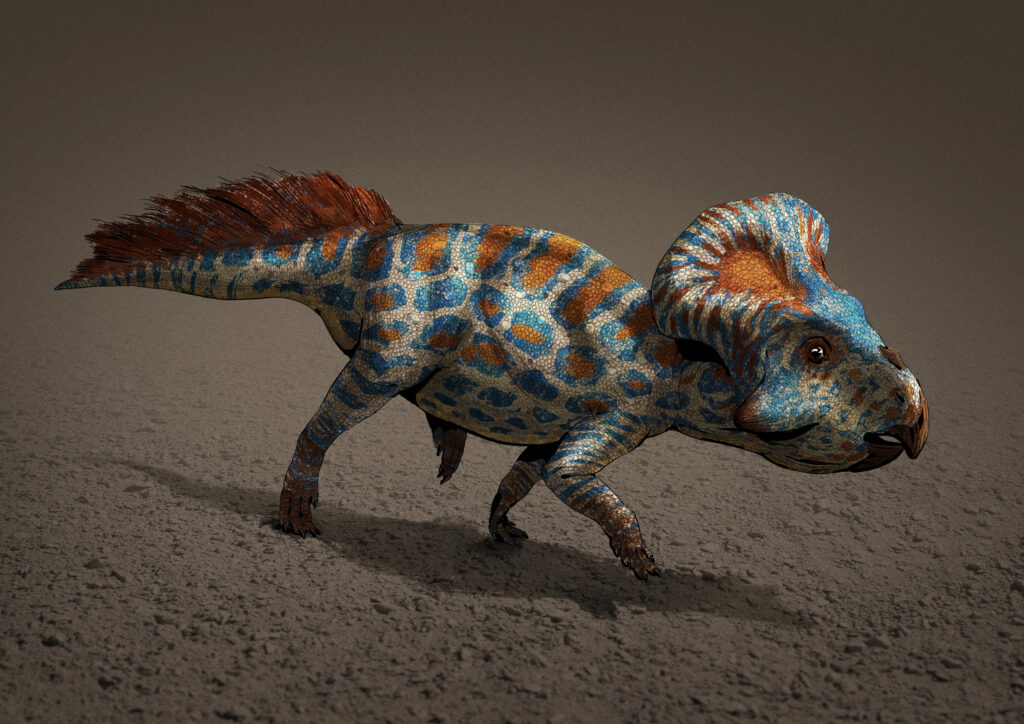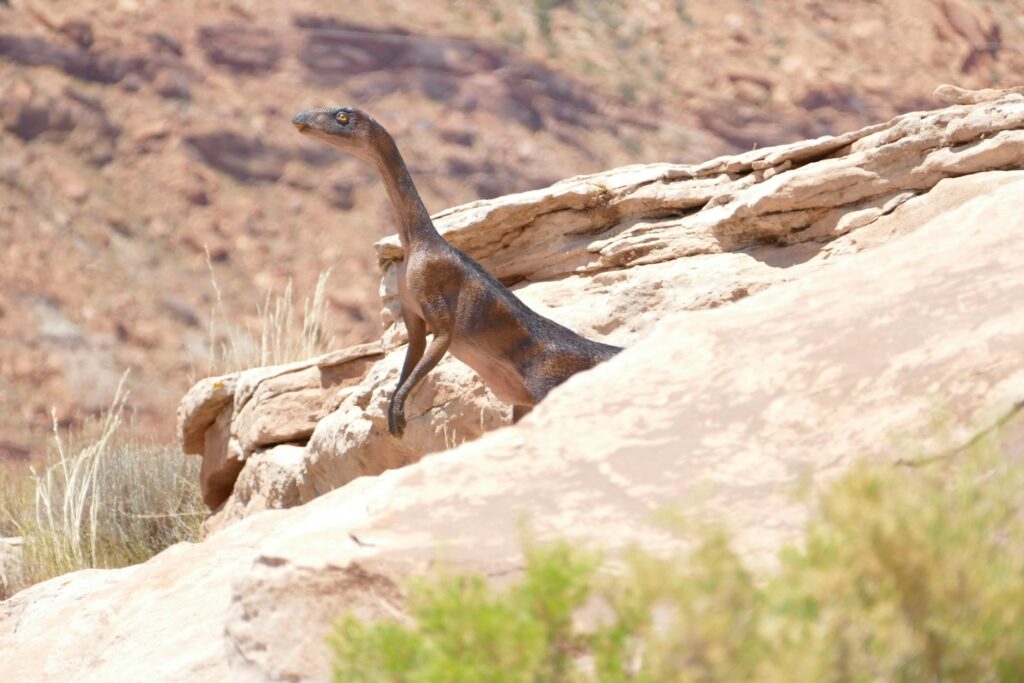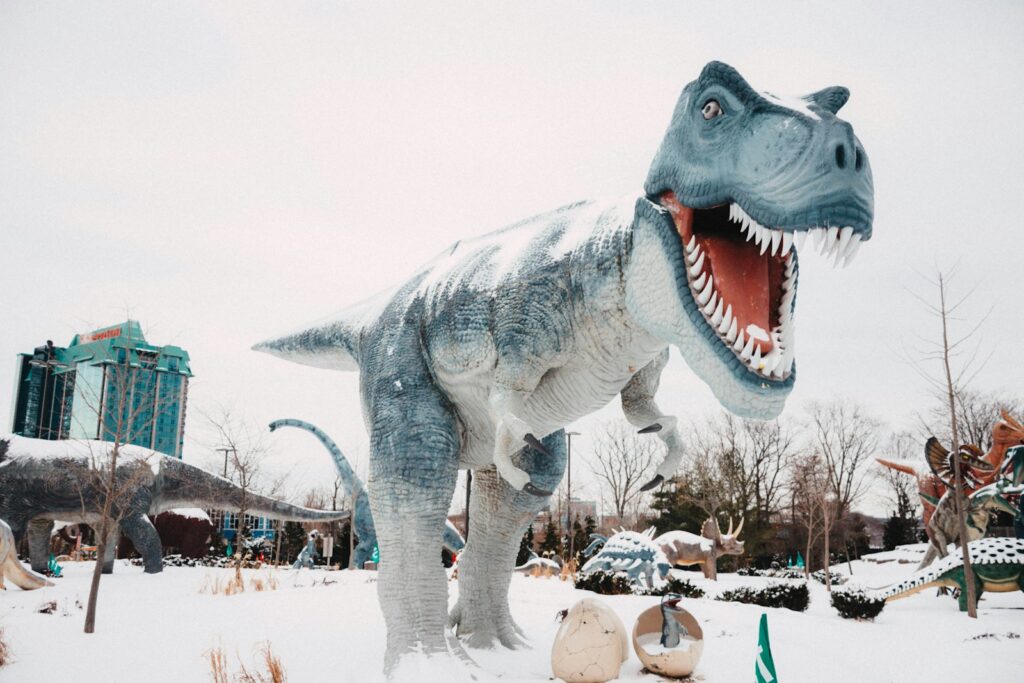When we think about dinosaurs, we often picture these magnificent creatures in lush, prehistoric landscapes that seem worlds apart from our modern environment. But what was Earth’s climate like during the Mesozoic Era when dinosaurs dominated our planet? From approximately 252 to 66 million years ago, Earth underwent dramatic climate shifts and geological changes that shaped dinosaur evolution and created ecosystems vastly different from those we know today.
This journey through Earth’s prehistoric climate reveals a fascinating world of extreme conditions, shifting continents, and environmental factors that allowed dinosaurs to thrive for over 165 million years before their eventual extinction.
The Mesozoic Era: Earth’s Climate Timeline

The Mesozoic Era, spanning from 252 to 66 million years ago, encompasses the entire reign of dinosaurs across three distinct periods: the Triassic, Jurassic, and Cretaceous. Each period featured unique climate patterns that influenced dinosaur evolution and distribution. The Mesozoic Era began following the devastating Permian-Triassic extinction event, which wiped out approximately 96% of marine species and 70% of terrestrial vertebrates, opening ecological niches that dinosaurs would eventually dominate.
This Era ended with another catastrophic event—the Cretaceous-Paleogene extinction—caused by an asteroid impact that eliminated non-avian dinosaurs and many other life forms. Throughout these periods, Earth’s climate underwent dramatic transformations that reflected changes in atmospheric composition, continental positions, and sea levels.
A Greenhouse World: Higher CO2 and Temperatures

During much of the dinosaur era, Earth existed in what scientists call a “greenhouse state,” with substantially higher carbon dioxide levels than today. Atmospheric CO2 concentrations ranged from 1,000 to over 2,000 parts per million (ppm)—several times higher than our current levels of approximately 420 ppm. This elevated CO2 created a powerful greenhouse effect that resulted in significantly warmer global temperatures.
Average global temperatures during peak greenhouse periods were estimated to be 5-10°C (9-18°F) higher than present day. Without permanent ice caps at the poles for much of this time, the planet had less reflective surface area, further enhancing warming. These conditions created a world where tropical and subtropical environments extended much farther toward the poles than they do today, supporting diverse dinosaur populations even in regions that would now be considered polar.
Supercontinent Pangaea and Its Breakup

When dinosaurs first appeared in the Late Triassic period, Earth’s landmasses were united as the supercontinent Pangaea, creating dramatically different climate patterns than we see today. This massive continental configuration generated extreme seasonal temperature swings and extensive interior deserts as air masses moved across vast land areas without the moderating influence of oceans. The interior regions of Pangaea experienced harsh conditions, with scorching summers and significantly cooler winters.
Throughout the Jurassic and Cretaceous periods, Pangaea gradually fragmented, forming the continents we recognize today. This continental drift created new ocean basins, mountain ranges, and coastlines, reshaping global climate patterns. The breakup also established new migration routes and barriers for dinosaur populations, driving regional adaptations and speciation events that contributed to dinosaur diversity.
Triassic Climate: The Dawn of Dinosaurs

The Triassic period (252-201 million years ago) marked the beginning of dinosaur evolution under predominantly hot, dry conditions across much of Pangaea. The early Triassic was especially harsh, with temperatures reaching some of the highest levels in Earth’s history immediately following the Permian extinction event. Many regions were characterized by extensive deserts and seasonal monsoons that created challenging conditions for early dinosaur ancestors. Toward the latter part of the Triassic, climate conditions began to shift toward increased humidity in some regions, creating more favorable habitats.
Early dinosaurs like Eoraptor and Herrerasaurus evolved during this period, developing adaptations to handle these variable and often extreme environmental conditions. The Triassic ended with another mass extinction event that eliminated many dinosaur competitors, setting the stage for dinosaur dominance in the Jurassic period.
Jurassic Climate: Peak Warmth and Humidity

The Jurassic period (201-145 million years ago) featured one of the warmest, most equable climates of the Mesozoic Era, allowing dinosaurs to diversify and thrive across much of the planet. Global temperatures during this period were remarkably stable and warm, with evidence suggesting tropical-like conditions extending to latitudes as high as 45° north and south. The breakup of Pangaea was well underway, creating new inland seas and increasing coastal environments that moderated temperature extremes.
Extensive evidence of lush forests, including massive fern prairies and conifer woodlands, indicates higher rainfall and humidity levels across many regions. This period witnessed the evolution of some of the most iconic dinosaurs, including the massive sauropods like Brachiosaurus and Diplodocus, whose gigantic sizes were supported by abundant vegetation and favorable climate conditions. The warm, humid Jurassic environment enabled reptiles to dominate virtually all ecological niches, from small insectivores to massive herbivores and apex predators.
Cretaceous Climate: Extreme Heat and Rising Seas

The Cretaceous period (145-66 million years ago) represented the pinnacle of dinosaur diversity and was characterized by even more extreme greenhouse conditions than the preceding Jurassic. Mid-Cretaceous temperatures peaked at levels possibly 10°C higher than today, making it one of the warmest intervals in Earth’s history. Sea levels rose dramatically during this period—in some cases more than 200 meters higher than present day—due to a combination of thermal expansion and the absence of polar ice caps. These high sea levels created extensive shallow inland seas, such as the Western Interior Seaway that divided North America into eastern and western subcontinent.
The combination of elevated CO2 levels, warmer temperatures, and higher humidity fueled explosive plant growth, particularly with the evolution and spread of flowering plants (angiosperms) during the mid-Cretaceous. These new plant communities provided novel food sources for herbivorous dinosaurs, driving adaptive radiation among groups like the duck-billed hadrosaurs and horned ceratopsians that developed specialized teeth and jaws to process this vegetation.
Polar Dinosaurs: Life in Extreme Latitudes

Perhaps one of the most surprising aspects of the Mesozoic climate was the existence of dinosaur communities in polar regions, areas that would be inhospitable to most reptiles today. Fossil evidence from Alaska, Antarctica, and northern Canada shows that diverse dinosaur ecosystems thrived at latitudes above 70° north and south. While these regions were much warmer than modern polar areas, they still experienced months of continuous darkness during winter and daylight during summer.
Evidence suggests some polar dinosaurs like Leaellynasaura and Cryolophosaurus had adaptations for low-light conditions, including larger eye sockets that may have improved vision during the dark polar winters. Growth rings in fossil bones indicate that some polar dinosaurs likely remained active year-round rather than migrating seasonally, suggesting they possessed adaptations for cooler temperatures despite being reptiles.
These polar dinosaur communities demonstrate the remarkable adaptability of dinosaurs to a wide range of climate conditions, challenging our traditional understanding of dinosaurs as strictly tropical or subtropical animals.
Ancient Forests: Vegetation in the Dinosaur Era

The plant communities that supported dinosaur ecosystems were dramatically different from modern forests, reflecting the distinctive climate conditions of the Mesozoic. Early dinosaurs evolved in a world dominated by gymnosperms—conifers, cycads, ginkgoes, and seed ferns—plants that were well-adapted to the variable climate conditions of the Triassic and Jurassic.
These ancient forests lacked the diversity of flowering plants we see today, instead featuring open woodlands of tall conifers with understories of ferns and cycad-like plants. The mid-Cretaceous witnessed a revolutionary change with the evolution and rapid diversification of flowering plants (angiosperms), which transformed ecosystems worldwide. Paleobotanical evidence indicates that Mesozoic forests had significantly higher productivity than modern equivalents, fueled by elevated CO2 levels and warm, humid conditions.
Tree-ring studies from fossil wood samples reveal rapid growth rates and minimal seasonal variation in many regions, suggesting year-round growing conditions. These abundant plant resources provided the foundation for complex food webs that supported the massive herbivorous dinosaurs and their predators.
Ocean Temperatures and Marine Ecosystems

While dinosaurs dominated land environments, Mesozoic oceans experienced equally dramatic climate conditions that shaped marine ecosystems. Ocean temperatures during peak greenhouse periods reached startling levels, with tropical surface waters potentially exceeding 36°C (97°F)—near the upper thermal tolerance for many modern marine organisms. Deep ocean temperatures were also substantially warmer than today, with bottom waters possibly 10-15°C warmer than modern deep oceans.
These warm ocean conditions contributed to reduced circulation and oxygen depletion in many marine settings, leading to periods of widespread anoxia (oxygen depletion) that triggered several oceanic extinction events. Despite these challenging conditions, marine reptiles like plesiosaurs, ichthyosaurs, and mosasaurs thrived alongside diverse fish communities and invertebrates. The warm oceans supported extensive coral reef systems that extended to much higher latitudes than modern reefs, creating biodiversity hotspots that functioned similarly to today’s coral reef ecosystems but with very different component species.
Climate Fluctuations and Extinction Events

Despite the overall greenhouse conditions, the Mesozoic Era was not uniformly warm and stable but experienced significant climate fluctuations and cooling episodes. Several relatively brief cooling events punctuated the generally warm conditions, sometimes associated with increased volcanic activity that injected sulfur aerosols into the atmosphere.
Evidence for these cooler intervals includes fossil plant communities indicating more temperate conditions and geochemical signatures in marine sediments suggesting temperature decreases. The end-Triassic mass extinction coincided with extreme climate destabilization linked to massive volcanic eruptions from the Central Atlantic Magmatic Province, causing rapid warming followed by cooling.
Similarly, a series of shorter-term climate fluctuations occurred during the Cretaceous, with some evidence for periodic cooling events that may have stressed certain dinosaur populations. These climate oscillations likely drove evolutionary adaptations and turnover in dinosaur communities, selecting for species that could adjust to changing conditions while eliminating less adaptable lineages.
Volcanic Activity and Its Climate Impacts

Volcanic activity reached extraordinary levels during certain periods of the Mesozoic, dramatically affecting global climate patterns that dinosaurs experienced. The breakup of Pangaea triggered some of the largest volcanic events in Earth’s history, creating massive flood basalt provinces that covered hundreds of thousands of square kilometers with lava flows.
The Deccan Traps in India, which formed during the late Cretaceous, released enormous volumes of carbon dioxide and sulfur compounds into the atmosphere over a relatively short geological timespan. These volcanic gases had complex and sometimes contradictory climate effects—CO2 drove long-term warming, while sulfur aerosols caused short-term cooling episodes. Ash and gas emissions from these eruptions would have temporarily darkened skies, reduced photosynthesis, and created acid rain conditions that stressed ecosystems.
Evidence suggests these massive volcanic episodes contributed to several extinction events throughout the Mesozoic, altering the course of dinosaur evolution by eliminating certain groups while creating opportunities for survivors to diversify. The long-term climate warming from volcanic CO2 emissions helped maintain the greenhouse conditions that characterized much of the dinosaur era.
Climate Evidence: How Scientists Reconstruct Mesozoic Weather

Reconstructing the climate of a world that existed over 66 million years ago requires sophisticated scientific detective work using multiple lines of evidence preserved in the geological record. Isotope geochemistry plays a crucial role, with oxygen isotope ratios in fossil shells and teeth providing temperature estimates for ancient oceans and rainfall patterns.
Plant fossils offer particularly valuable climate insights, as leaf characteristics such as size, shape, and margin type correlate strongly with temperature and precipitation regimes in modern plants. Fossil soils (paleosols) preserve chemical signatures that indicate past rainfall amounts, seasonality, and weathering conditions influenced by temperature. Growth rings in fossil wood reveal seasonal patterns and growing conditions, while pollen and spore assemblages document broader vegetation changes tied to climate shifts.
Computer climate models, calibrated with geological and paleontological data, now allow scientists to simulate Mesozoic atmospheric and ocean circulation patterns with increasing accuracy. By combining these various approaches, researchers continue to refine our understanding of the dynamic climate conditions that dinosaurs experienced throughout their 165-million-year reign.
The End-Cretaceous Climate Catastrophe

The dinosaur era concluded with one of the most dramatic climate catastrophes in Earth’s history, triggered by the impact of a massive asteroid approximately 10 kilometers in diameter in what is now the Yucatán Peninsula of Mexico. This cataclysmic event ejected enormous quantities of dust, soot, and sulfur compounds into the atmosphere, blocking sunlight and causing a severe “impact winter” that may have lasted for years.
Global temperatures plummeted rapidly, with some estimates suggesting a cooling of 10°C or more within days or weeks of the impact. The initial cooling was followed by longer-term warming due to the massive release of CO2 from wildfires, vaporized carbonate rocks, and disrupted ocean circulation patterns. Acid rain created by atmospheric sulfur compounds would have dramatically altered soil and water chemistry, while widespread fires ignited by re-entering impact ejecta consumed forests across vast regions.
These combined climate effects proved insurmountable for non-avian dinosaurs and approximately 75% of all species on Earth, bringing the age of dinosaurs to an abrupt end while creating ecological opportunities for the mammals that would eventually dominate the post-dinosaur world.
Conclusion

The climate of Earth during the dinosaur era presents a fascinating contrast to our modern world—a greenhouse planet with higher temperatures, elevated carbon dioxide levels, different continental arrangements, and no polar ice caps. These conditions created the stage upon which dinosaur evolution played out over 165 million years. From the hot, dry environments of the early Triassic to the warm, humid forests of the Jurassic and the extreme greenhouse conditions of the Cretaceous, dinosaurs adapted to a remarkable range of climate regimes.
Understanding this ancient climate not only illuminates the world that dinosaurs inhabited but also provides valuable context for comprehending Earth’s climate system and its potential responses to rapid change. As we face modern climate challenges, the lessons from Earth’s distant past offer both cautionary tales and insights into the resilience and adaptability of life on our dynamic planet.




